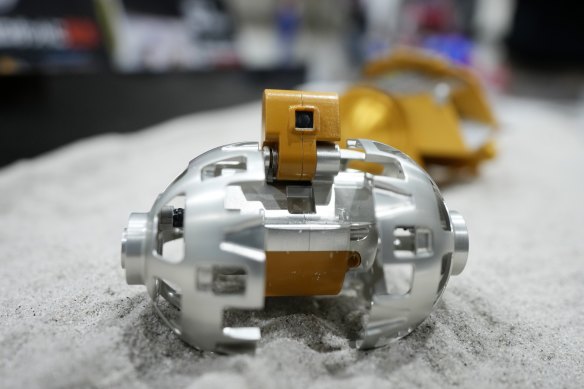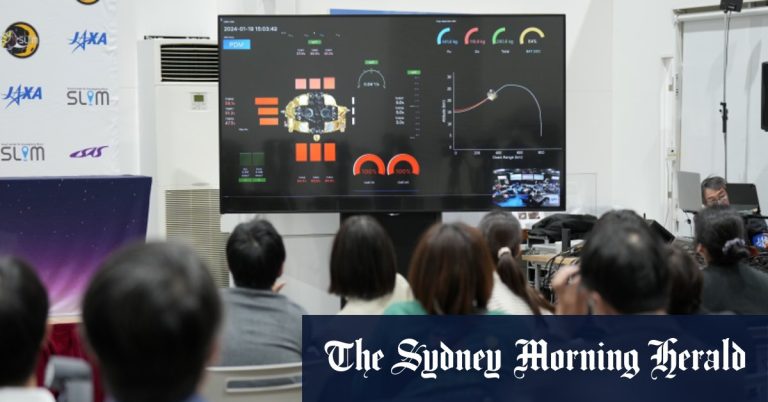Only four countries – the former Soviet Union, the United States, China and India – and no private company were able to achieve a soft landing on the moon.
The SLIM's successful landing and demonstration of the precise landing “will help Japan maintain the advancement of its technology at a very high level in the world,” Ritsumeikan University professor Kazuto Saeki said before the landing attempt. Saiki developed the SLIM near-infrared camera that will analyze moon rocks after landing.

A palm-sized model of the Lunar Exploration Vehicle 2 (LEV-2).credit: AP
The 2.4 meter by 1.7 meter by 2.7 meter vehicle includes two main engines with 12 thrusters, surrounded by solar cells, antennas, radar and cameras. Keeping the weight light was another goal of the project, as Japan aims to carry out more frequent missions in the future by reducing launch costs. The SLIM weighs 700 kg at launch, less than half the weight of India's Chandrayaan-3.
When the probe lands on the surface, it identifies where it is flying by matching its camera images with existing satellite images of the moon. The Japan Aerospace Exploration Agency says this “vision-based navigation” enables precise landings.
The shock absorbers come into contact with the moon's surface in what the Japan Aerospace Exploration Agency calls a new “two-step landing” method — where the back parts touch the ground first, then the entire body gently collapses forward and comes to rest.
download
Blyden Bowen, an associate professor at the University of Leicester who specializes in space policy, said precision landing “is not a game-changer”, but the effects of cost-cutting and lightweight lander manufacturing could open the way for space organizations around the world to undertake missions to the moon.
“Japan was not as big as the United States, the old Soviet Union, or China today in terms of size, but in terms of capability and specialized advanced technologies, Japan has always been there.”
Upon landing, SLIM was to deploy two small probes — a jump vehicle as large as a microwave oven and a rover with wheels the size of baseballs — that would take images of the spacecraft. Tech giant Sony Group, toy maker Tommy and several Japanese universities have jointly developed the robots.

